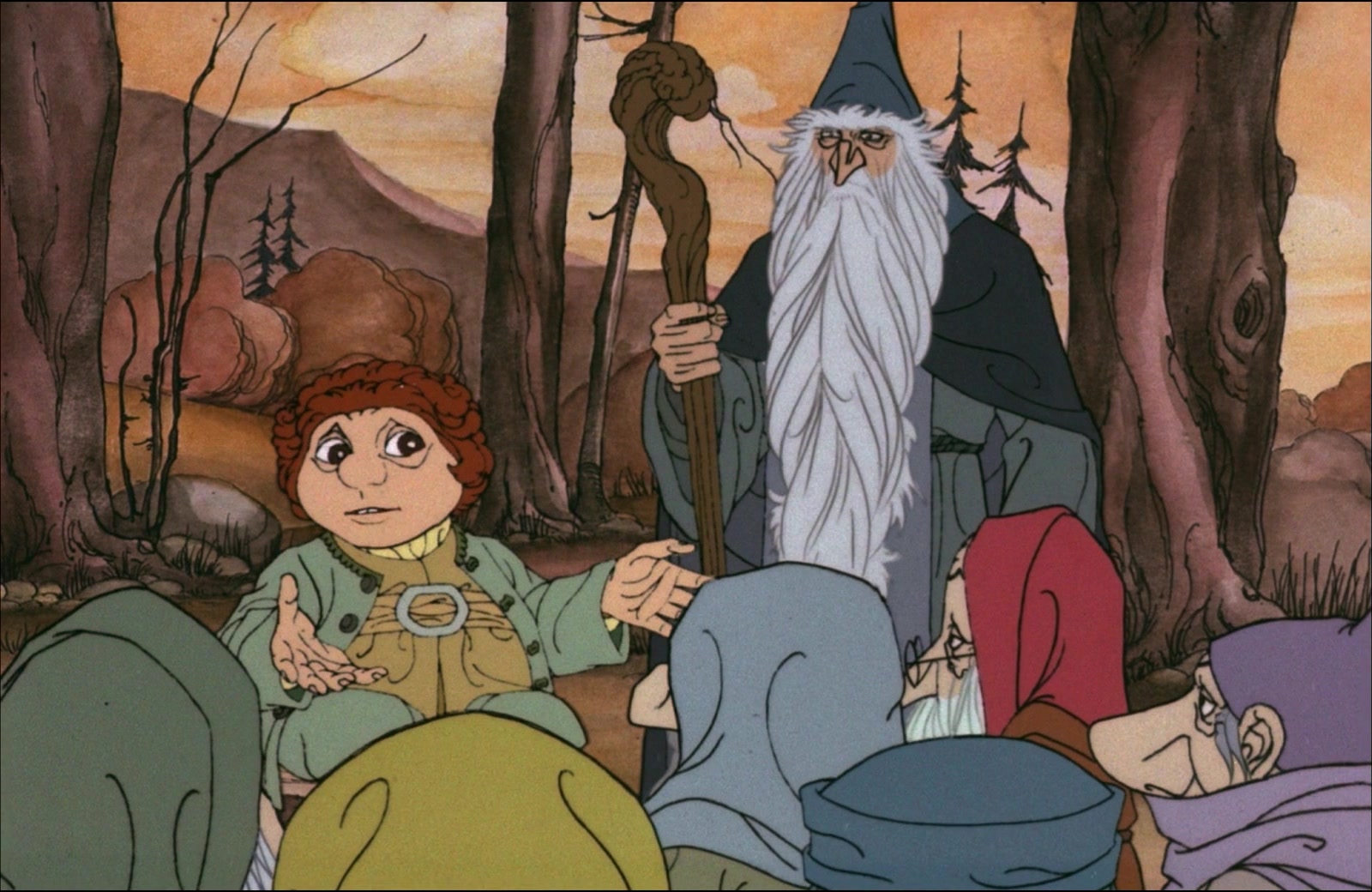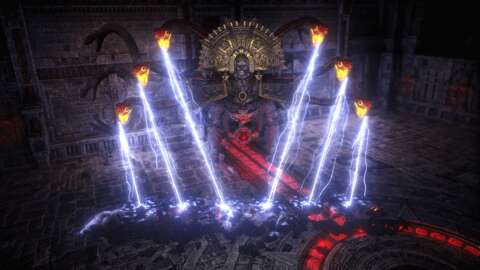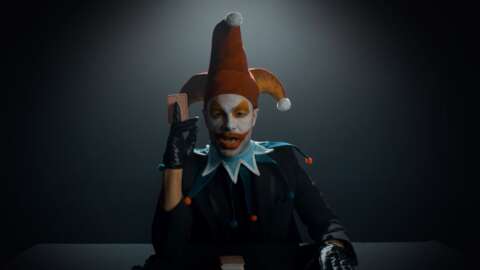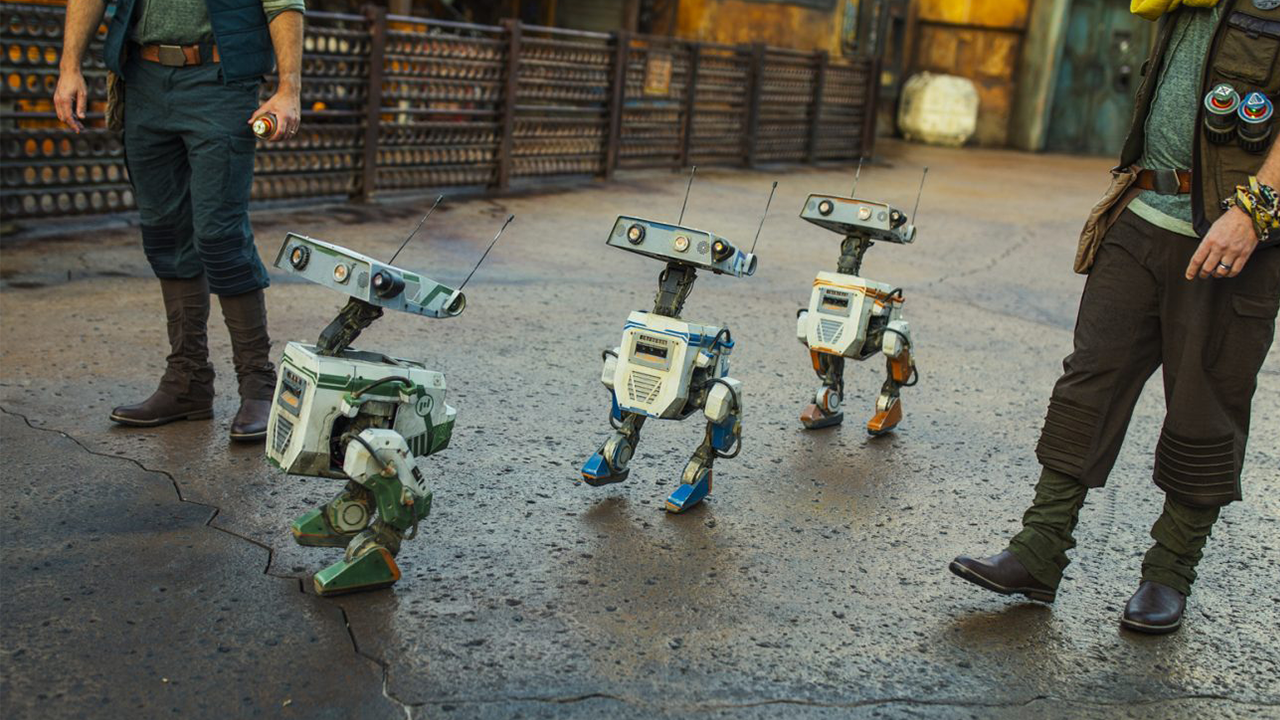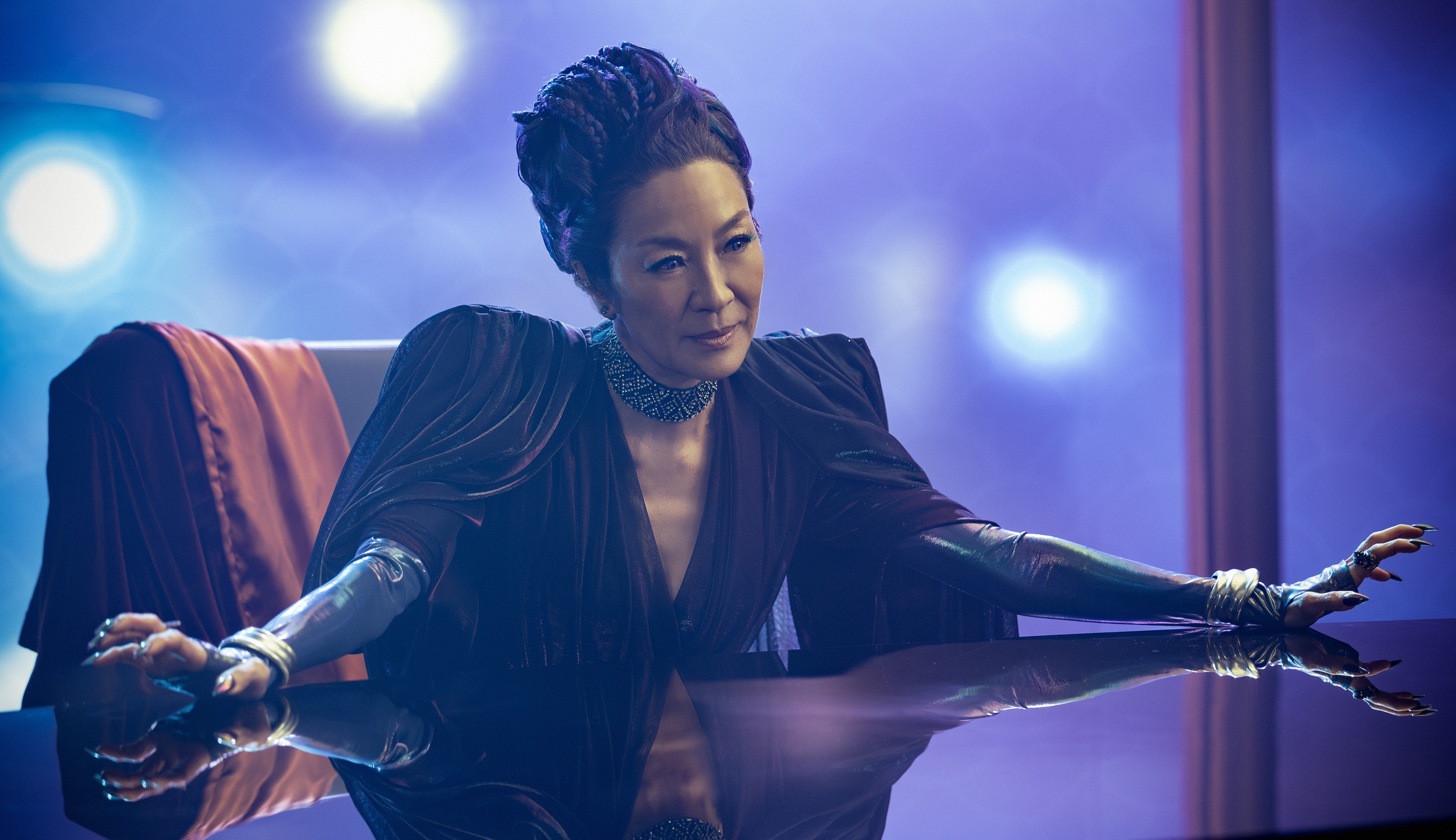
Over the last 20 years, Peter Jackson’s Lord of the Rings trilogy has been enshrined as a wintertime favorite by those craving spectacle and a cozy time on the couch. We can (and have!) debated if the films are best served by one holiday or another, but every fantasy nut seems to agree: The mix of Misty Mountains snow and an undying flicker of hope for a brighter future is a cure for the winter blues.
But I have a new suggestion for Rings fans who might want to shake things up, or put an all-ages-friendly spin on the tradition: 1977’s The Hobbit.
Produced by Arthur Rankin Jr. and Jules Bass, the duo behind stop-motion Christmas classics like Rudolph the Red-Nosed Reindeer and Santa Claus Is Comin’ to Town, as well as the hand-drawn Frosty the Snowman, The Hobbit TV movie’s reputation is… poor. Critics of the time saw it as slow and overly whimsical. But after a recent reread of J.R.R. Tolkien’s novel, and a rewatch of the film (it’s streaming now on Max), those negatives feel like an important part of the Rankin/Bass formula that has kept the company’s holiday shorts so indelible 60 years later. In fact, The Hobbit might feel right at home alongside Rudolph in a Christmas rewatch slate.
Animated for Rankin/Bass by Topcraft, the anime studio that Hayao Miyazaki would eventually call home, the 1977 film was adapted by Romeo Muller (the writer behind all the Christmas specials) with the utmost faithfulness. Much like Tolkien’s book, the film wastes no time in introducing Bilbo Baggins to Gandalf, Thorin Oakenshield, and Thorin’s band of dwarves, who require Bilbo’s help to infiltrate and recapture the Lonely Mountain from the gold-hoarding dragon Smaug.

The party ventures off and hits all the familiar beats, from an encounter with trolls to a showdown with the Goblin King, a fateful meeting with Gollum, and a barrel ride on the way out from the elven kingdom. Anyone familiar with Jackson’s nearly nine-hour take on The Hobbit will be thrilled to see Muller gracefully thread Tolkien’s tale into a 78-minute TV movie package. The only victim of cuts is Bilbo and company’s stint with Beorn the shape-shifter, whose side adventure even feels like trimmable fat in the book (hot take?).
Topcraft’s animation is particularly lush throughout the film, building on production design by Rankin, who was heavily inspired by illustrator Arthur Rackham’s watercolors. The hard lines, shadow work, and earthy color palette feel more like concept art than cel animation. Compared to the studio’s work on Frosty, Topcraft outdoes itself with the character performances. The dwarves’ worn faces create a history to Middle-earth and every monster is complete nightmare fuel (but… in a kid-friendly way). I could watch Bilbo and Gandalf puff hand-drawn smoke rings all day.
Similar to their Christmas movies, Rankin and Bass lean heavily on songs to stitch the action together. In the absence of traditional carols, their go-to composer, Maury Laws, wrote some of the most 1970s folk bops imaginable, including “The Greatest Adventure (The Ballad of the Hobbit),” performed by Glenn Yarbrough, who went on to make a decent living touring with Christmas music. The soundtrack gives Bilbo and the dwarves’ perilous journey a certain fancifulness that isn’t present in Tolkien, but it’s leveled out by the casting: You don’t cast John Huston as Gandalf to make things gooey. Everyone in this movie is barking and constantly at each other’s throats, true to the source material.




In rewatching The Hobbit around the Christmas season, I couldn’t help but see the dedication to Tolkien’s plotting as downright theological, a kind of spiritual reverence that was present in the Christian-leaning Christmas specials. Some believe that Tolkien’s time writing letters in the voice of Father Christmas led him to create Gandalf in the first place — watching a bearded dude and a bunch of dwarves could certainly conjure the image of Santa at his factory. But even beyond the surface, there’s a certain Yuletide glow to Rankin/Bass’ Hobbit, the idea that this great myth must be committed to screen in all of its impossible glory. The tales of Middle-earth feel like scripture as Muller pieces together the key set-pieces. If Tolkien didn’t write it, it’s not really in this version of The Hobbit.
Case in point: Jackson dedicated an entire movie to the Battle of the Five Armies, whereas Rankin and Bass take a more Tolkien-esque approach of announcing the impending battle, sprinkling in a few spurts of action, then cutting to black when Bilbo gets knocked out. The hobbit wakes up as the dust of war settles. Everyone hugs it out and goes home. That’s what happened, that’s what we get, and that’s all we really need.
That brevity is in the name of being downright religious about the text. Bilbo’s riddle-filled face-off with Gollum takes the form of a biblical parable. Smaug growls with fire before going full Old Testament on Lake Town. A final burst of greed from Middle-earth’s warring factions is met with a pure heart by Bilbo, who convinces man, elf, and dwarf to put differences aside and create a new future for the continent.
It’s epic, and full of joy. And if you spend your Christmas at the church of Lord of the Rings, 1977’s The Hobbit might be an unexpected treat.
The Hobbit is streaming now on Max.
Source:https://www.polygon.com/movies/501804/hobbit-animated-streaming-1977-rankin-bass